Sezione di Genova
Università di Genova
|
|
ISTITUTO NAZIONALE DI FISICA NUCLEARE
Sezione di Genova |
DIPARTIMENTO DI FISICA
Università di Genova |
|
Cultural Heritage
IBA techniques in Archeometry
Any human artefact bears the history of its making, use, and conservation. Fossils as well bear the history of their birth, of their life, of the aggression of nature after their death. Reading this history is the ultimate goal of all the scholars and sciences that operate in the broad environment of the cultural heritage. Part of the history is visible. The expert eyes of an art historian, trained by thousands of examinations and supported by a sound knowledge of an historic period, can detect in the form of bodies, in the shades of colours, in the length and thickness of brush-strokes, the unmistakable signature of a master. A large part of the history is however hidden, lying below the surface, trapped in the texture of the object or deeper in the constituent atoms and molecules. The preparatory drawing of a painting, the artistís second thoughts and remakes, the technology of preparing a colour, of firing pottery, of soldering metals, the signs of climate in a fossil, all require instruments to be read. These are the foundations of archaeometry.
In this context, IBA analytic techniques have shown in the past to be able
to play an important and fundamental rule. The number of museum objects a priori
interesting to be analyzed is really huge, but their value, as well as the
need of their safeguard and preservation and their complexity, often dissuade
from applying analytic chemical techniques even on micro-samples extracted from
art works. On the contrary IBA techniques, mainly PIXE, RBS,
PIGE respect important operative criteria:
Analyses are multi-elemental e fast. With a single measurement of few minutes it is possible to determine in the sample the presence of many elements (about 20 in PIXE among more abundant, less abundant or in trace) shortening the displacement time of the sample from its normal site.
Analyses are non destructive and in practice non invasive. In principle, it is not necessary to draw from works, and it is not necessary any preparing on them. Furthermore, possible effects of exposure to particle beams are marginal (local modifications of colour and temperature) and transitory. Even when art work cannot be moved and a drawing is unavoidable, this can be limted in size to no more than 2-300 mm.
The use of extracted (in air) beams allows enough flexible Geometry. Whole art works, even sizeable, can be exposed and analyzed in their different parts during a unique measure session.
Analyses have a good sensitivity for most of the chemical elements. Dealing with thick samples, a sensitivity of the order of "per mille" in concentration can be usually achieved.
Analysis software is sufficiently upgraded.
Different techniques (e.g. PIGE-PIXE or RBS-PIXE ) can be applied together during the same measure session, in order to improve sensitivity for light elements (Na) or for elements not seen by PIXE (F).
There are suitable accelerators near the main musea in the world, such as Louvre and Uffizi. Portable instrumentations have also been developed, even if their sensitivity is lower than the one achieved with particle accelerators.
Recently also micro-beams extracted in air have been developed, so that it is now possible to analyze spots of art works of the order of 20-50 micron, or thin sections prepared for other techniques, such as scanning electronic microscopy (SEM).
The employ of these techniques must take into account that every document or art work represents a single case, having unique problems and requiring specific analysis procedures which are settled by art historians and analysts together. The main techniques are:
Analysis delle costruction techniques of art works through the determination of the chemical elements and hopefully chemical compounds (e.g. pigments used in the production of a particular colour) existing in different parts of an art work.
Indirect dating of documents through a comparison between the composition of single parts of documents not dated (e.g. inks or colours in miniatures) and analogue parts of dated documents.
Provenience analysis and historical-artistic arrangement of museum objects through data base production (e.g. the composition of ceramic or glass paste, the presence of particular trace metals in gems) for objects with known origin (region, shop or author) to be used as a comparison with the composition measured in object with unknown origin or author.
Help to restoration for the identification of possible previous restorations and for the choice of the most suitable materials to be used in the needed works.
Our Laboratory traditionally uses PIXE technique, by which can be analyzed all inorganic materials, even if mixed in the same object to organic materials. We can for example analywe a gem, such as a ruby, a metallic ink on an organic paper base, an inorganic pigment suh as cinnabar, mixed with an organic "glue" as linseed oil is. In some cases PIXE becomes a really unique ideal technique, for exaple in the analysis of drawings made by dry tip (silver or lead) on parchment, where the particle beam spot is comparable with the size of the drawn and PIXE sensitivity for metals is excellent, being instead insensitive to the organic substrate. There are also cases where PIXE suffers instead some limitations. PIXE analysis of a metal alloy (an ancient coin, for example) is limited in depth to thickness of a few microns, and the analyzed material is mainly made by the oxides and carbonates surface patina than by the object itself.
Glazed Sculpture of della Robbia
Some of the most representative productions of the Italian Renaissance, are
certainly the sculptures made by glazed ceramics (figure 1) related to
Luca Della Robbia (figure 2) and his family. For more than one century
the "robbian" production had a remarkable artistic value and a sizeable commercial
success, so that it was widely imitated by coeval sculptors such as Benedetto e
Santi Buglioni. The presence of many of such art works in today's artistic
patrimony attests the wideness of that production and reminds the opportunity
to setup a data base of analytical informations, complementary to historical and
stylistic considerations, to be used in the restoration activity, in the attribution
of the works, in the understanding of the manufacturing used techniques.
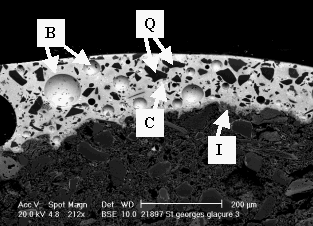
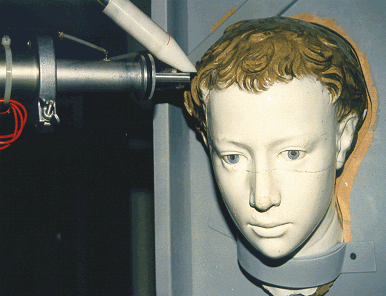
Starting from 1998 a wide international collaboration including, besides our laboratory, INFN Laboratory in Florence, Louvre Museum, and Opificio delle pietre dure in Florence, dealt with the analysis of the coloured glazes of "robbian" production (figure 1) on different samples (whole art works, fragments, SEM sections) and a sizeable number of art works.
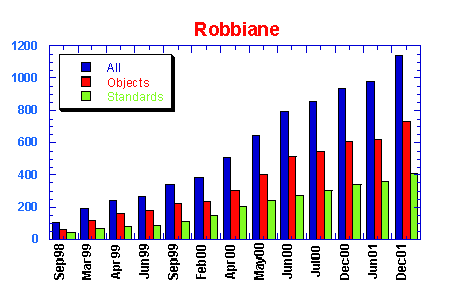
Fig 3 Progression of the number of analysis on "robbian" art works and reference standards since september 1998 to december 2001. |
Due to the large number of analyzed samples, it was possible to find out important correlations among the elements composing robbian glazes, Fe, Co, Ni and As shown in figure 4 |
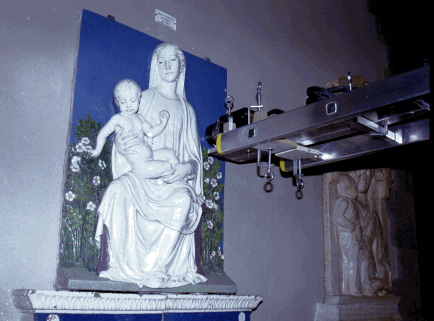
Pigments od early Middle Ages from Palazzo dei Provveditori di Cividale
National archeological museum of Cividale del Friuli includes an important
collection of decorative and structural architectonic elements typical of
Venetian-Byzantine style. Among the decorative elements, twelve paterae and
three panels supported with a centre in relief. Among the structural elements,
five pillars, five shelfs and several fragments (figure 6). All these objects
show phytomorphe decorations and fights among animals, and are functionally and
dimensionally correlated. Dating, on stylistic base, places them at the second
half of 12th century, when Cividale was the residence of Aquileia Patriarch, the
second authority of the churche after the Pope. Instrumental analysis of the
remaining pygments has been carred on with different techniques (PIXE, SEM-EDS,
Raman) in order to verify the common origin of the pieces, both for the production
shop, and the hosting building. The typology of pygments and use of precious
materials support the hypothesis that these pieces would come from the patriarchal
palace before the reconstruction following the ruinous fire in 1186.
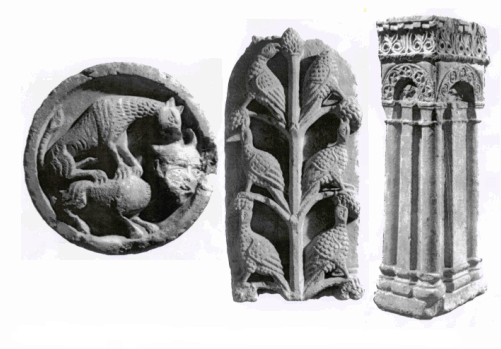
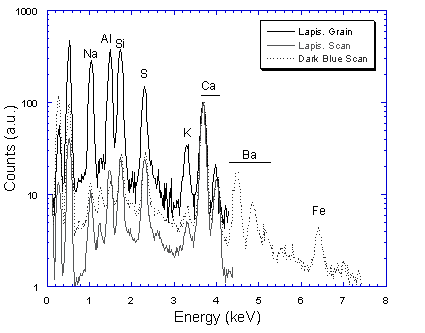
For a further deepening about PIXE technique applied to the Archeometry we
refer to:
"
Ion beam study of art and archaeological objects
" di G. Demortier
 |
HOME |